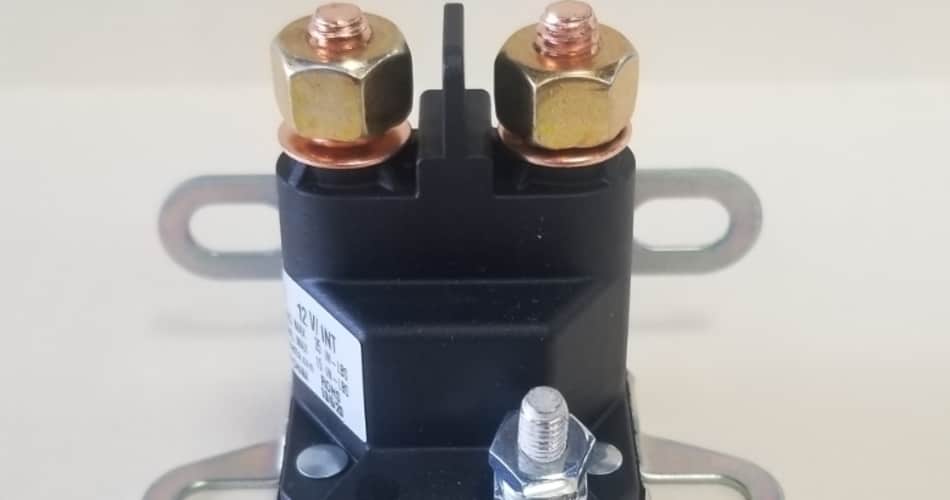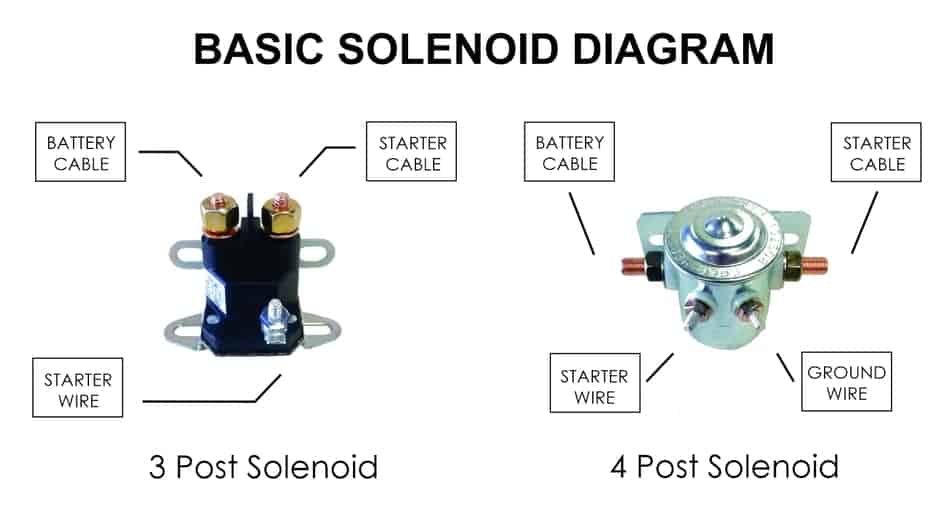How to Diagnose an Ineffective Kawasaki Starter Solenoid
If you’re having trouble getting a piece of machinery to turn over, you might want to check the starter solenoid.
A faulty Kawasaki starter solenoid will make a clicking or humming sound when the key is turned. When a solenoid fails, it can cause the wiring to smoke or melt.
Keep reading and I’ll explain how to locate the starting solenoid and test it to see whether it’s working properly.

Before diagnosing, repairing, or operating, be sure you’ve read and understood all of the safety recommendations in the equipment’s operator’s manual. If you are unsure about how to proceed or if you lack the necessary expertise or experience, you should seek the assistance of a professional.
Table of Contents
Solenoid for Kawasaki Starter—What Is It?
A Kawaski solenoid for the starter functions as a toggle. The starter motor is activated by pressing a button on an electromagnet switch.
The solenoid is typically installed near the starter. It can perform its function whether or not it is attached to the starter.
The solenoid could be positioned on the chassis farther from the starter than the battery.
Solenoids with 3, 4 Posts
Common wiring diagram for solenoids with 3, 4, or more terminals. Keep in mind that not every lawnmower has the same wiring diagram.
Light switches and 12-volt plugs will be shown wired in certain diagrams. Simple schematics of the wiring are all that is shown in these diagrams.
What Does the Solenoid Look Like on a Kawasaki Starter?
All electric motors use solenoids to initiate the starting process. The posts on your solenoid can be round or square, and there can be three or four of them.
Some solenoids will be fastened to the top of the starter, while others may be fastened to the mower’s chassis.
The solenoid receives power from the battery through its positive (+) wire. Locating the solenoid is as simple as following the positive battery cable.
What Causes a Kawasaki Starter Solenoid to Fail?
In electronics, a solenoid is a type of switch. We are all aware that electrical appliances might suddenly stop working.
A spring and copper plate are housed inside the solenoid.If the spring in your Kawasaki starter solenoid becomes too weak or the copper plate corrodes, your starter will not work.
A weak starter, faulty battery, or poor ground might potentially cause the solenoid to fail.
Kawasaki Starter Solenoid Warning Signs
If you hear a click or hum when you turn the key to start your Kawasaki mower, the starter solenoid may be broken.
If a wire starts to smoke or melt at high temperatures, it could be a sign that your solenoid is malfunctioning.
Methods for Identifying a Faulty Kawasaki Starter Solenoid
Items Required:
- A Volt-Ohms Gauge
- Screwdriver
- Consistency Light
- Test wrenches for slack wiring
- If the screwdriver is unsuccessful, use the needle-nose pliers.
- Charger for Batteries (Optional)
There are a few options for determining the problem with your lawn mower’s solenoid.
1. Always have a full charge on your battery
Ensure that your battery has a voltage of at least 12.3 using your voltmeter.
2. Prepare the Mower
- Place the brakes in park
- Put the lawnmower in park before you start it.
- Slide the switch to “on.”
3. Use a Screwdriver to Bypass the Starter Solenoid
To avoid using the starter, lay a long screwdriver over the solenoid and touch the two cables. The battery cable and the starting cable are the two wires you need.
When the screwdriver touches the wires, it could cause a spark. Don’t freak out, as this is rather frequent.
Solenoid failure is more likely if the engine starts while bypassing the solenoid. Needle nose pliers can be used to bypass the solenoid if the screwdriver doesn’t do the trick.
Before deciding to replace the solenoid, make sure that other potential causes have been ruled out.
4. Check the Kawasaki Solenoid
The starter solenoids can be checked if they are attached to the starter. Take off the engine’s starter and plug a battery charger into the solenoid to see whether it works. This is a convenient method for checking the starter’s solenoid connection.
After taking the starter off of your lawnmower, you should connect the negative (-) clamp to the starter’s housing and the positive (+) clamp to the solenoid’s large post and exciter wire. This is merely a short evaluation of the backups in case the starter gets hurt.
Does a Kawasaki Starter Solenoid Have a Bypass?
By touching the battery cable to the starter cable and inserting a long screwdriver across the solenoid, it is possible to circumvent the solenoid and start the engine. Take caution. It’s typical for the connection to produce a spark.








